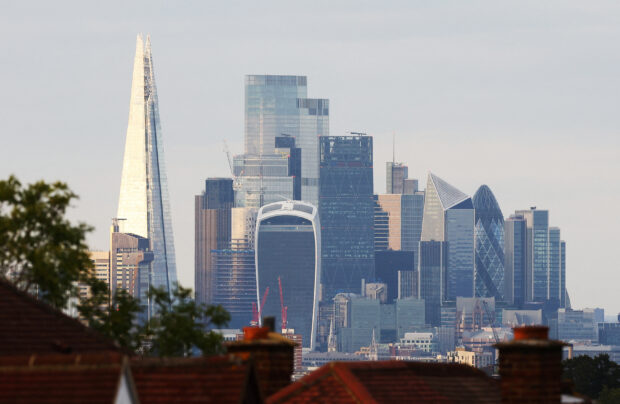
LONDON -Britain’s economy partially recovered in August after a sharp drop in July but the bigger picture remained one of only sluggish growth after last year’s surge in inflation and 14 back-to-back interest rate hikes by the Bank of England.
Official data showed economic output expanded by 0.2 percent in August from July, matching the median forecast in a Reuters poll of economists.
But July’s drop, when rainy weather and strikes by teachers and other workers hit the economy, was estimated to have been steeper than first thought, falling by 0.6 percent rather than the initial estimate of 0.5 percent.
The last time the economy shrank by more than that on a month-on-month basis was in June last year which reflected the impact of a one-off holiday to mark the late Queen Elizabeth’s 70 years on the throne.
READ: UK economy fares worse than expected in July as strikes weigh
The International Monetary Fund this week forecast Britain would have the slowest growth among the Group of Seven nations in 2024.
The signs of a slowdown prompted the BoE to refrain from raising borrowing costs again last month.
“The UK economy is holding up but remains in a precarious state,” said David Bharier, head of research at the British Chambers of Commerce.
“Our research is clear about the issues UK firms are facing – three years of economic shocks, high inflation and interest rates, skills shortages, and trade barriers with the European Union.”
Nonetheless, August’s growth reduces the possibility of a recession starting as early as the July-September period.
The ONS said the economy would need to grow by 0.2 percent in September to avoid a contraction in the third quarter, excluding other factors.
The data showed Britain’s huge services sector grew by a slightly stronger than expected 0.4 percent in August from July while manufacturing and construction shrank by 0.8 percent and 0.5 percent.
READ: UK PMI survey shows sharpest business slowdown in 7 months
Over the three months to August, the economy grew by 0.3 percent, a performance the ONS described as modest and helped by car manufacturing and sales as well as construction.
Investors are putting a chance of less than one in four on the BoE resuming its rate hikes after its next scheduled meeting in November.
A survey published earlier on Thursday showed the housing market remained in the doldrums in September after the climb in borrowing costs although the halt in the BoE’s run of rate hikes raised hopes of a return to growth in sales in a year’s time.
A survey published earlier this week showed consumers were holding off on much of their non-essential spending as rising motor fuel prices added to the broader cost-of-living squeeze.
Britain’s economy stood 2.1 percent bigger than in February 2020, just before the coronavirus pandemic hit, the ONS said.
The agency recently revised up its estimate of the size of economic output since the pandemic, putting Britain’s recovery in the middle of the pack among similar economies and no longer the laggard.

